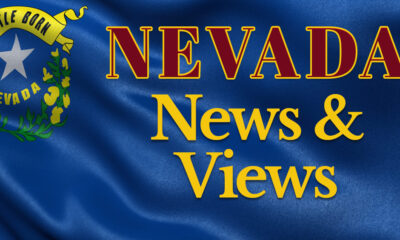A couple weeks after Halloween, economist Andrew Biggs brought a fright to Nevada’s taxpayers at NPRI’s November luncheon. They may be on the hook for tens of billions more in unfunded liabilities than they’ve been told.
Biggs discussed the funding problems of Nevada’s Public Employee Retirement System (PERS) plan, the defined-benefit pension plan in which most public employees in Nevada participate. The presentation was a follow-up to the study Biggs had authored for NPRI a few weeks ago.
The good news is that many other states’ government employee pension problems are far worse than Nevada’s. Many are underfunded to a far greater level and haven’t been nearly as responsible as the Silver State.
For one thing, Biggs pointed out the state of Nevada has continued to make full contributions each year. Other states have shorted contributions to their pension plans, creating even greater problems.
The bad news is Nevada’s problems are pretty bad. According to Biggs, they are worse than PERS is saying.
PERS reports that it is underfunded by approximately $10 billion, which means the value of its assets is $10 billion less than what it would need to pay all of its future liabilities. While this may sound bad, it’s not unmanageable and, as a percentage, is much better than many other states. But according to Biggs, rather than $10 billion, the plan is actually underfunded by approximately $40 billion, a huge difference.
The reason for the difference is the manner in which liabilities are calculated for government pension plans as opposed to private plans. Public pension plans are able to ignore the risks of their investments because the taxpayers, not the plans, assume that risk. Private pensions, on the other hand, are not.
If a private pension has a shortfall, the beneficiaries have to accept reduced payments. If a public pension runs short, the taxpayers must make up for it in higher taxes or cuts in spending on other programs, such as schools, roads, etc.
This taxpayer backstop is inherent in the calculation of future liabilities by government pension plans and is sanctioned by the Government Accounting Standards Board (GASB). For instance, Biggs claimed Nevada should be using a rate of return of around 3% to calculate its future liabilities. However, because GASB rules allow public plans to ignore the risk in their investments, Nevada is able to use a rate of return of approximately 8%.
The rate that PERS uses is perfectly legal and perfectly acceptable for a government plan but, according to Biggs, perfectly wrong. In fact, Biggs said economists characterize it as “laughably” wrong.
Economists and actuaries generally require that a plan with a guaranteed benefit should use investments with a guaranteed return to calculate its unfunded liabilities, regardless of the instruments the money is actually invested in. But PERS does not use this rate. Rather, it calculates its liabilities using a much higher rate of return, ignoring the risk that comes with this higher rate, which, according to GASB, it is allowed to do. Other states do exactly the same thing for their pension plans as well.
Biggs illustrated the absurdity of such an approach by saying that if PERS could magically double the amount of money in the fund and then invest that money in a risk-free investment, it would actually appear to be in WORSE shape than it is now. Ironically, Biggs said, it is this miscalculation of future liabilities that allows PERS to claim it would cost taxpayers additional money to switch to a 401(k)-style defined-contribution from the current plan.
There are other issues that make government employee pension plans problematic for taxpayers.
Private companies can, and often do, change the terms of their employees’ retirement benefits on a going-forward basis. A company can’t go into a worker’s 401(k) and take out money it had already put in but it can change things such as the level that it will match the employee’s contributions.
But, according to Biggs, public pensions normally cement in place a worker’s pension benefits from the first day of employment. What a government worker can expect to receive in retirement benefits (based upon pay and years of service) are never reduced after his first day on the job.
Government workers are generally able to retire earlier and at a higher rate compared to their wages while working than private-sector employees. Biggs claimed that a comparison of retirement benefits of private-sector workers and government employees reveals a public employee with a defined benefit plan will average about 50% greater retirement benefits than a private sector worker with a 401(k).
Unfortunately, Nevada’s public employee pension plan, as well as those of many other states, is on a path to blow up the state’s budget. Fortunately for Nevada, many other states are in worse shape than we are and, hopefully, we will be able to watch their implosions and react to save ourselves.
With people like Andrew Biggs sounding the alarm maybe we’ll wake up sooner than later.


Facebook
Twitter
Pinterest
RSS